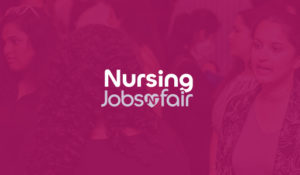No matter where you turn, healthcare systems all over the world are suffering from acute nursing shortages. In the United Kingdom alone it is estimated that the NHS is already short some 47,000 nursing staff for its English hospitals, with the crisis set to compound over the coming years. In the United States, California is on track to be short 44,000 nurses by the end of this decade, with the US in general having a nursing gap of nearly 20% from the total patient need by 2025.
This poses a serious threat not just to the provision of healthcare the world over, but to nurses themselves. Poorly staffed nursing shifts impress upon active nurses to cover more ground and take on more responsibilities to cover for the shifts that have gone unfilled, negatively impacting on patient care and contributing to nurse’s reports of burnout and poor job satisfaction, which in turn compounds the staffing shortage by driving nurses out of the sector.
But with healthcare systems all over the world experiencing the same shortage of the same select, crucial skill sets, it begs the question – why? What’s causing the nursing shortage, and what can be done to reverse this alarming trend in healthcare?
Not Enough Educators
A shortage in nurses has a knock-on effect that rebounds far beyond the coalface of patient care. Fewer nurses progressing through the career path leads to fewer nurses with the experience and tenure to train the next generation of nurses.
The American Association of Colleges of Nursing reports a 6.5% faculty vacancy rate or the equivalent of almost 1,500 unfilled positions. This depresses nursing colleges’ educational capacity and chokes the supply of freshly trained nurses right at the source, as there simply aren’t enough educators to instruct large numbers of nursing students.
With some 13 million nurses needed worldwide by the end of the decade to meet global demands, an ample cohort of educators is crucial to pass on their skills to a new generation and make up the shortfall.
Ageing Workforce
At the complete opposite end of the spectrum to newly trained nurses trickling into the system are those veteran nurses who are ageing out of it. 55% of RNs in the United States are over the age of 50, with a million nurses set to hit retirement age over the next 10 to 15 years. 500,000 nurses were anticipated to have retired in 2022 alone.
This is placing an immense burden on staffing numbers, with more nurses leaving the profession through retirement than can be trained to replace them. The situation is so acute that some jurisdictions, notably the United Kingdom, have suggested remobilising retired nurses to bring them back into practice and plug glaring gaps in the labour force.
While workers reaching retirement age is a universal constant across every sector, the sheer volume of nurses entering their retirement years serves to highlight how important it is for education systems to be doing everything they can to increase their capacity to train new nurses.
Ageing Population
An ageing population doesn’t just depress nursing staff numbers by taking older nurses out of the workforce, but in fact, increases staffing demand by placing ever-greater strains on healthcare services.
As we age, we become increasingly susceptible to incapabilities and co-morbidities that complicate our hospital admissions and demand a greater level of attention and patient care. This in turn places greater demands on nursing staff, as hospital admissions increasingly require more and more attentive care the older a patient gets.
In the United States alone, baby boomers (born between 1946 and 1964) now account for more than 21% of the total population, with the oldest boomers hitting 65 in 2011. As the cohort ages, they are pushing up the average age in the US and thus having a relative impact on healthcare, as the average age of patient admissions rises with the population.
This means a greater strain on healthcare systems and a proportional increase in the demand for nurses, placing even more pressure on staffing numbers at a time when the healthcare system is already struggling to provide.
Prohibitive Entry Requirements
It’s also getting harder for health services to source the nursing talent they need from overseas.
Bureaucratic red tape can stimy recruitment drives abroad. In the UK, lengthy and convoluted registration processes to onshore foreign nurses can lead to applications going unfulfilled and being abandoned even when healthcare organisations have agreed in principle on a job offer.
While the sponsorship process for nurses acquiring a visa is usually a simple matter, getting them certified to start working in a British care environment can be more challenging. In 2022, pass rates for the certification exam foreign nurses must sit to be qualified to work in the UK had dropped in some cases by 21% compared to the pre-pandemic average.
Public healthcare services, such as the NHS, are also ultimately accountable to the political climate of the day. In the post-COVID world, such organisations are acutely aware of the sensitive optics around sourcing nurses from developing regions like India or sub-Saharan Africa, where the infrastructure to quickly produce new nurses to fill the gap left by foreign recruiters may not necessarily exist. Private healthcare organisations, of course, are less throttled by these political considerations, ratcheting up an already fiercely competitive labour market.
And while countries like the UK have relaxed strict immigration controls to help address their nursing shortages, there is always more that can be done to help onshore nurses moving to the country from abroad. Supports and training on an ongoing basis for newly-arrived nurses go a long way to help improve retention and ensure that nurses feel welcome and confident in a strange environment far from home.
Work-Life Balance
Work-life balance is the defining labour question of our time, with ideas such as remote working, the right to disconnect and even the four-day working week gaining in popularity, particularly among the younger working generations.
This march to ever more accommodating and life-affirming working conditions runs afoul of the nursing sector, where long shifts at unsocial hours all days of the week are the foundations on which the profession is built. The majority of US nurses (58%) say they desire a greater work-life balance, with nearly half (46%) wishing they simply had enough time during a shift to eat a full lunch.
Such a devastating impact on work-life balance has a deleterious effect on morale and retention among nurses. More than half of nurses surveyed in the UK reported considering leaving nursing. But poor work-life balance prospects can dissuade people from outside the profession from taking it up, too, stifling the supply of new nurses.
As crucial as nurses are to the bedrock of any healthcare system, treating them with the same degree of respect and care traditionally afforded to white-collar employees goes a long way to alleviating some of the mental strain of working in the profession. Retention is as integral to combatting the nursing shortage as mobilising new nurses, and addressing the most pressing needs of nurses – including their desire for greater respect for their lives outside of work – is key not only to retaining them but keeping them happy and motivated.
Violence
Being at the forefront of patient care, nurses are more susceptible than any other healthcare professional to suffer from workplace abuse. An American study found 44% of nurses reported being physically assaulted on the job; 68% reported verbal abuse. On average, 43% of female nurses also report sexual harassment in the workplace.
This, understandably, has a devastating impact on nurse morale. Nurses’ shifts are stressful and challenging enough without threats to their physical and mental well-being. Nobody should have to work under the threat of abuse of any kind, but when taken in the context of critical staffing shortages across nursing, this becomes more than simply a cultural problem. Sexual harassment, in particular, has been cited by some nurses as contributing to extensive absences, finally culminating in them leaving the profession altogether.
Unfortunately, violence against nurses follows the trend of other factors contributing to the nursing shortage, in that it’s only getting worse. According to a 2021 report by the American Federation of Labor and Congress of Industrial Organisations, instances of workplace violence across the health and social care sectors have doubled since the onset of the COVID-19 pandemic. The report also detailed how employees in the healthcare industry were the most likely to miss work due to workplace violence, more so than workers from any other industry.
Burnout
Inordinate workplace stresses combined with a lopsided work-life balance contribute to high levels of burnout among nurses. Many of the factors discussed in this article play a role in the startlingly high number of nurses who report experiencing burnout; 38% of nurses in one study admitted to feelings of burnout. In a 2018 study, 32% of nurses who had just left the profession reported burnout as the main reason. This was before the pandemic; figures have only worsened since COVID overwhelmed the already-fragile global healthcare systems.
Burnout represents a vicious cycle amidst health services stretched to breaking point. Inadequately staffed shifts require nurses to tend to more patients on their rounds, with less time to perform their tasks or take breaks. This leads to higher levels of burnout, with more nurses considering leaving the profession as a result, impacting numbers and causing more shifts to go understaffed, thus beginning the cycle anew.
Cumbersome Recruitment Practices
Sluggish, outdated, and costly recruitment practices do the already beleaguered nursing sector no favours, either.
Healthcare organisations find the recruitment market saturated with agencies offering premium rates for temporary placements. Crowded out of direct hiring by these agencies, healthcare organisations, certainly in the United Kingdom, are inclined to use temporary agency placements to paper over their staffing shortages in the short term. This not only precipitates a vicious cycle, as those organisations face the same urgent scramble to fill their vacancies once those temporary placements elapse but proves excessively costly in the longer term.
A lack of recruitment expertise and knowledge of best-practice undercuts healthcare recruiters in this regard. While healthcare organisations tend to recruit passively, by placing job ads on traditional channels and working with the trickle of respondents who filter in on their own accord, recruitment agencies, able to dedicate more time and resources to the process, can actively headhunt talent based on skills criteria, even when those nurses aren’t actively searching for a new job.
Job Fairs Offer a Solution
This is where a more direct approach to recruiting can pay dividends.
By engaging with prospective talent directly, rather than relying on passive lead generation or costly agency hires to meet their demands, healthcare organisations can selectively target exactly the skillset they require for a fraction of the cost of outsourcing the process.
Job fairs, connecting eager jobseekers from nursing (and other healthcare professions) with the world’s leading health and social care providers, is just such an opportunity.
With demands for talented nurses at an all-time high, there has never been a more crucial moment to get ahead of the curve and attract the very best talent on offer.
For more information on how your organisation can go about making its next generational hire, visit the exhibitors’ page for the Healthcare Job Fair or the Nursing Jobs Fair.




 Previous Post
Previous Post 





